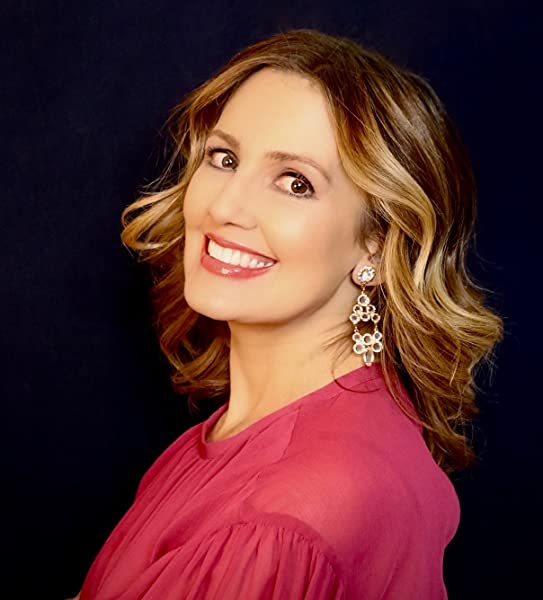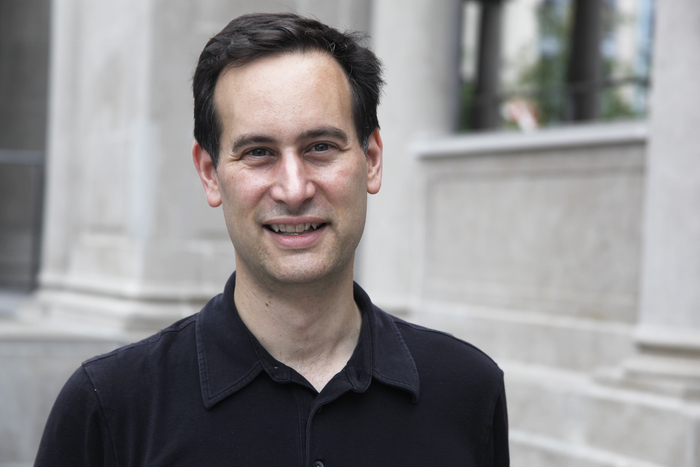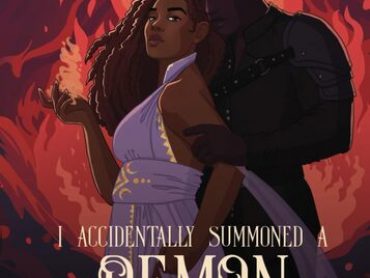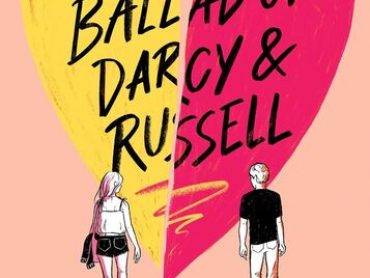Jennifer Niven and David Levithan are the authors of Take Me With You When You Go. The book is written in email exchanges between two siblings. Jennifer and David explore hope and siblinghood within this novel. YEM was able to speak with Jennifer and David about visions for turning the book into a film, how writing a book with each other is different than writing alone, and if they have any plans to write another book together in the future.
Young Entertainment Mag: It is pretty unique that your new book Take Me With You When You Go is written as a series of email exchanges. How do you think that method helps the story be more relatable to a young audience living in a technology-driven world?
Jennifer Niven: I think so much of how young people communicate—even more so in this era of COVID— is via technology, so writing it in email form felt very natural for our two teen characters.
David Levithan: It’s also central to the mystery in the book that my character has no idea what Jennifer’s character is doing. The fact that we were writing from different places helped that.
YEM: When you started collaborating, you didn’t plan out or discuss the book with each other. What made you decide to go about writing in such a spontaneous way? Did it make the project more exciting?
Jennifer: David suggested our rules for writing the book, which were: don’t think, just write, and we never discuss the plot. I found it thrilling to write in this way because it’s the first time I’ve written a book in this style. It was also exciting to receive his chapters, not knowing what was going to happen or where Ezra was going to go, and then to send him chapters knowing Bea would also be full of surprises for him.
David: When Ezra is writing to Bea, asking, “Please tell me what’s going on!” that’s also me writing to Jennifer, asking, “Please tell me what’s going on!” It was very easy for me to write from a position of uncertainty, since I genuinely had no idea what Jennifer was up to. (And, true enough, there are plenty of twists and turns that I didn’t see coming . . . at all.)
YEM: Since the book shows two perspectives – Ezra’s and Bea’s – did one of you write as Ezra, and the other write as Bea? Or did you take turns writing for both characters?
Jennifer: David wrote Ezra and I wrote Bea.
David: What’s also interesting is that there isn’t much overlap of characters either, since Bea has run away and Ezra is left behind. So the characters you see in Ezra’s present tense only exist in Bea’s past tense. I’d never written a collaboration like that before.
YEM: Both of you have had books made into films. What is the process of bringing your story and characters to life like? Do you have a vision for Take Me With You When You Go being adapted into film as well?
Jennifer: I was fortunate enough to write the script for All the Bright Places and be involved in casting and be on set, among other behind-the-scenes aspects of the film. Films are so different from books because there’s a lot less real estate on the screen than on the page. You almost have to think of movies as a different take on the same story, and to me the most important thing is honoring the heart of the story and the characters. As for Take Me With You When You Go, I definitely have a vision for that as a film… ☺
David: And I very much trust Jennifer’s vision for that film, because when it comes to adaptation I like to take on the role of #1 cheerleader and spectator.
YEM: Being influential authors of the young adult genre, what is the number one encouragement that you have for your young readers?
Jennifer: Always remember that you are unique in all the world, that you are important and necessary and enough, that you are deserving of love and that you matter. And you are not alone.
David: I can’t say it any better than that.
YEM: What is unique about the young adult genre and what is your favorite thing about writing this genre?
Jennifer: For me, my favorite thing is the readers. I feel so fortunate and honored to get to write books for young people about the issues they’re facing. I remember so well what it was like to be a teen—the intensity of feeling, all the momentous firsts, that feeling that you alone were going through something and no one else understood. To know that I’m able to reach readers, to remind them they are loved and seen and heard, is the most amazing honor.
David: I love the emotional truthfulness of YA. We really want to be honest with our readers.
YEM: How is writing a book with another author different from writing a book by yourself?
Jennifer: There is less pressure! It’s wonderful knowing there is another person to share in the creation of the story, the characters, and the world you are crafting. It’s also very fun. Writing can be such a solitary endeavor, and while I enjoy that, it’s also stimulating to collaborate.
David: For me, whenever I’m writing a solo book, I genuinely don’t have any thought in terms of who the reader is. It’s just a vague sense of “a reader out there will read this.” But when I’m collaborating, my co-writer isn’t just creating the story with me – when I’m writing, she’s the person I want to make laugh or cry or gasp or smile. I love that. And I also love that I am as much a reader of this book as I am a writer – as Jennifer said above, there would ALWAYS be a thrill when I received a chapter from her and read if for the first time.
YEM: You must have had something in common with each other to create Take Me With You When You Go. What was it that led you to come up with the story and what common themes does it carry from both of your previous books?
Jennifer: I mentioned on twitter that the writer I’d most like to collaborate with was David Levithan, and a week later he sent me the first chapter of the book with the message: Be careful what you wish for… In terms of the story, we played off each other and just followed the characters where they wanted to go. But even though we never knew what the other was going to do, it was important to us to write from our hearts with honesty and care about the struggles Ezra and Bea were facing. This is definitely something that we’ve done in our other books, and the main reason for that is that we are passionate about reminding readers that they are seen and that they are not alone.
David: Jennifer and I were paired by our publisher for her very first YA event, and we got along instantly. But we also didn’t know each other very well when we started writing – which I think helped the book. There was complete trust, because there was such mutual admiration for the work we’d already done. But there was also a lot to discover.
YEM: Since you two did not have a set deadline, did it make writing the book easier and more relaxed than writing with deadlines?
Jennifer: It was definitely more relaxed before we had a deadline—we wrote the book in fits and starts in the background of our other projects. It was such a joy to turn to, especially when I was stumped now and then with other things I was working on.
David: I think it really helped that we lived with the characters in our heads for years, not months. I think we really came to understand them more than if we’d rushed it.
YEM: So apparently, a fan inquiry suggesting the two of you writing a book together got the ball rolling initially. What do you think it is about both of your writings that led a reader to suggest a collaboration?
Jennifer: I feel David and I have similar writing styles—we both write from the heart with honesty, feeling, humor, and hope about issues that are important to young people. David once described young adult authors as “ambassadors of empathy,” and I feel that phrase could describe both of us because not only do we value writing about real-life issues, we care deeply about the readers we’re writing for.
David: It’s also possible I paid someone to write that post just to get the ball rolling.
YEM: Do you two have any plans or ideas about making another book together? Maybe even a sequel?
Jennifer: We actually haven’t discussed it yet, but I could definitely see that happening…
David: The beauty is that we won’t talk about it or plan it. One day we just might do it.
YEM: As New York Times bestselling authors, which of your books was your first to earn you that title and how did you feel when you reached that goal?
Jennifer: For me, it was All the Bright Places. I had written books before, with varying degrees of popularity, but none had hit the Times list. All the Bright Places was my first young adult book, and I remember the exact moment I got the news that it was a NYT bestseller— I had to pull over to the side of the road and call my mom and cry happy tears.
David: Most of my favorite books haven’t hit the list. So while I love being on it, I also love the books that don’t make it on. While I think both Jennifer and I appreciate what being a bestseller can do, I’m sure we’d easily trade that for the emails and messages we get from readers about what our books have meant to them. That’s the true accomplishment.
YEM: What is your advice for somebody who wants to become a bestselling author?
Jennifer: Write the story you want to read. Don’t write with anyone else over your shoulder. Always believe in yourself and your work. Honor your gifts. Don’t ever limit yourself or your imagination. Remember that you are the only you there is, which means only you can write the story you can write. Don’t ever compare yourself to others. And remember to show up and do the work—if you don’t write it, it won’t get written.
David: Don’t focus on whether the book will sell. Focus on making it a great book.
YEM: How did you come up with your main characters Ezra and Bea?
Jennifer: David came up with Ezra and I came up with Bea. I usually do a lot of character work before I start writing, but in this case I just wrote on instinct. David sent me that first Ezra chapter, and through his eyes and his email I suddenly saw Bea. She just came to life and I tried not to overthink her but instead go with my first instinct of who she was.
David: Honestly I think I started with the situation – a boy wakes up and discovers his sister has run away – and then from the reaction to that situation, the characters started to form.
YEM: What are some of your favorite things about Ezra and Bea? Is there one line in the book that best represents each character?
Jennifer: I love the way they love each other and the fact that—no matter where they are in the world— Bea is Ezra’s home and he is hers. I think this line represents them both: “It’s wonderful when someone else sees you, the real you, but maybe the most important thing is seeing yourself.”
David: I think both Ezra and Bea feel very real and very human to us. I love that they are trying to get to a better place, but don’t always take the easy (or right) path to get there.
YEM: What did you learn about yourself from Ezra and Bea?
Jennifer: I learned that, even though we appear to be very different, Bea and I are more similar than I initially thought. We are both resilient and independent and loving and more emotional than we sometimes let others see.
David: Honestly, Ezra at his age has been through so much more than I have at my age. I admire and respect anyone who can find their way out of a hostile space and toward the place where they will be seen as they should be seen.






